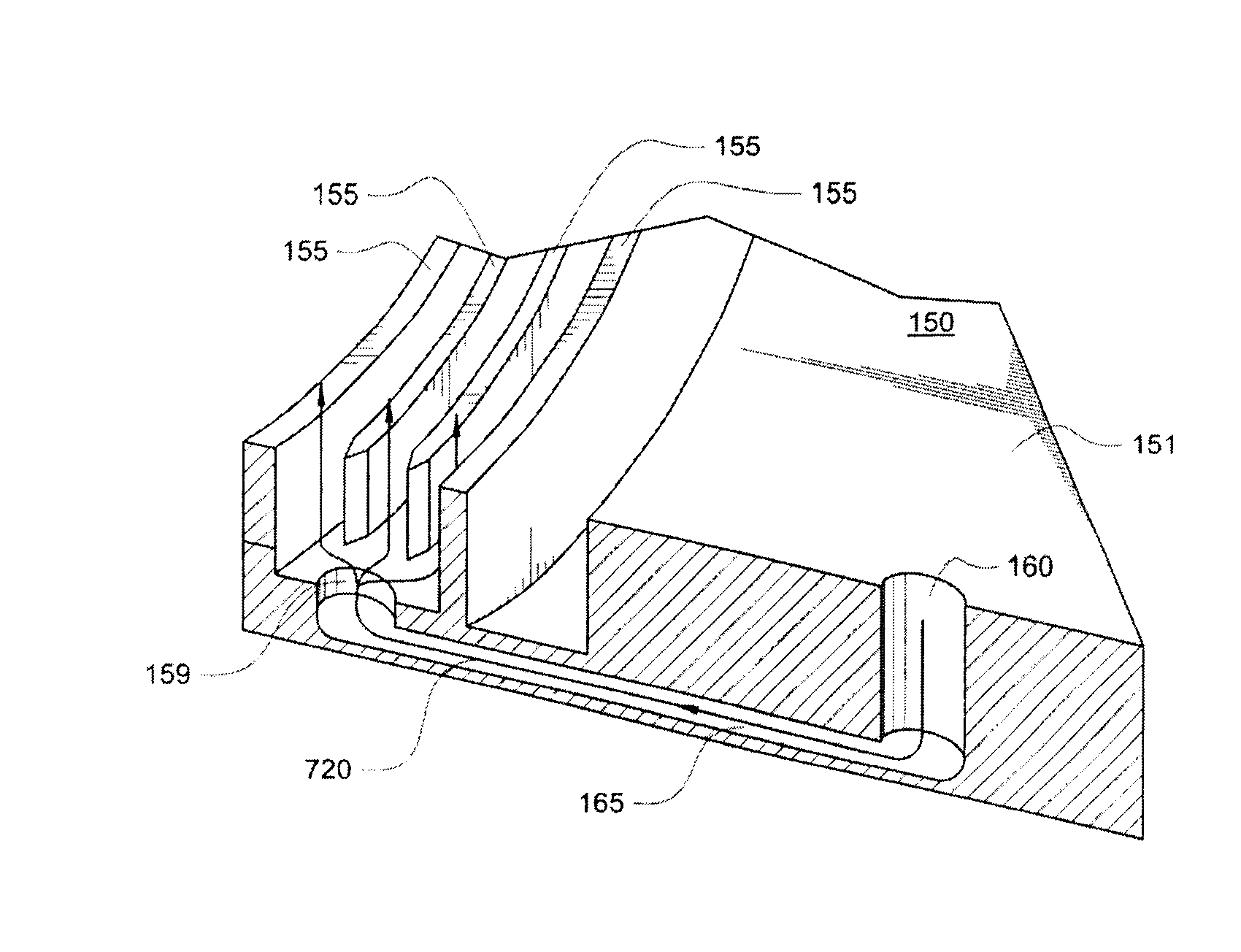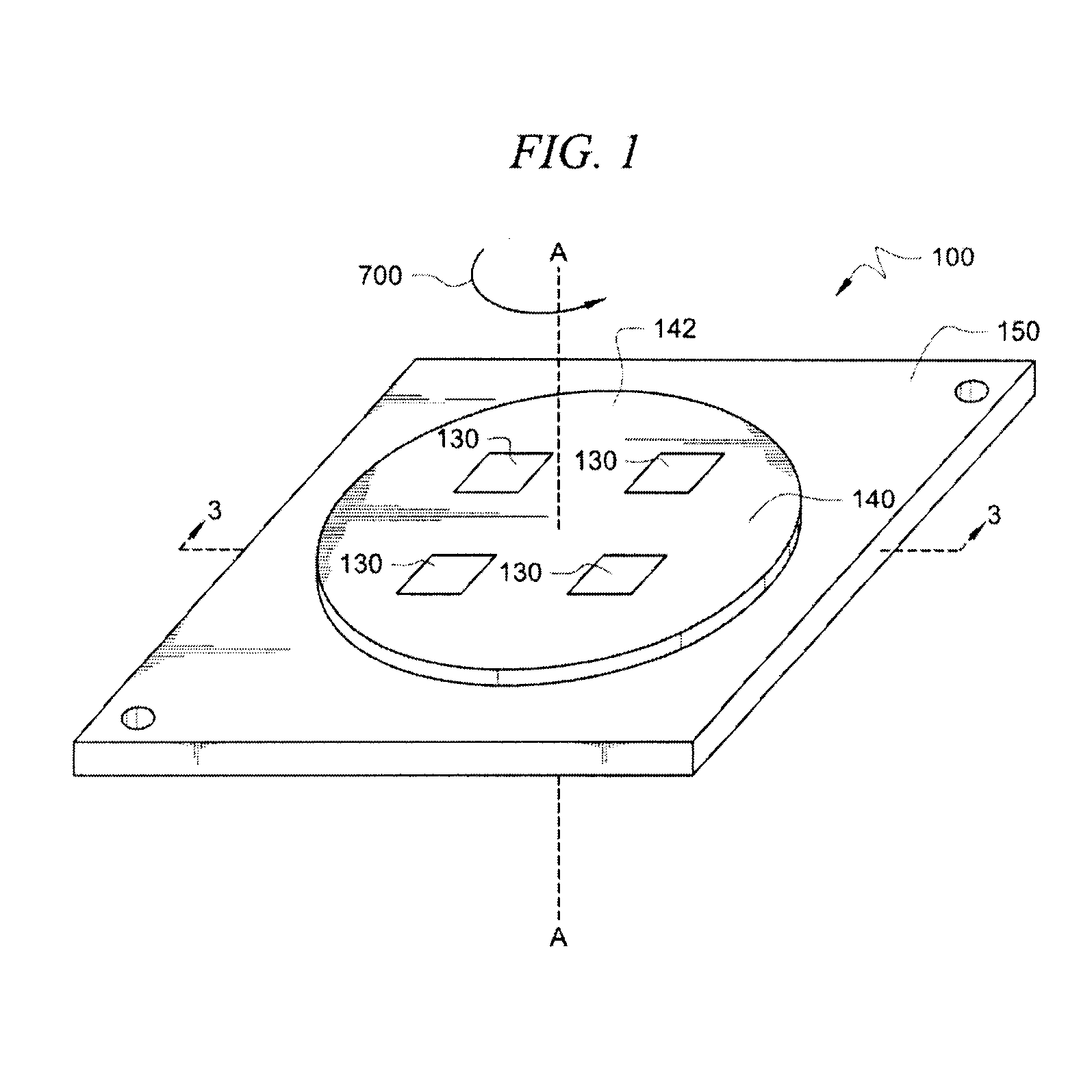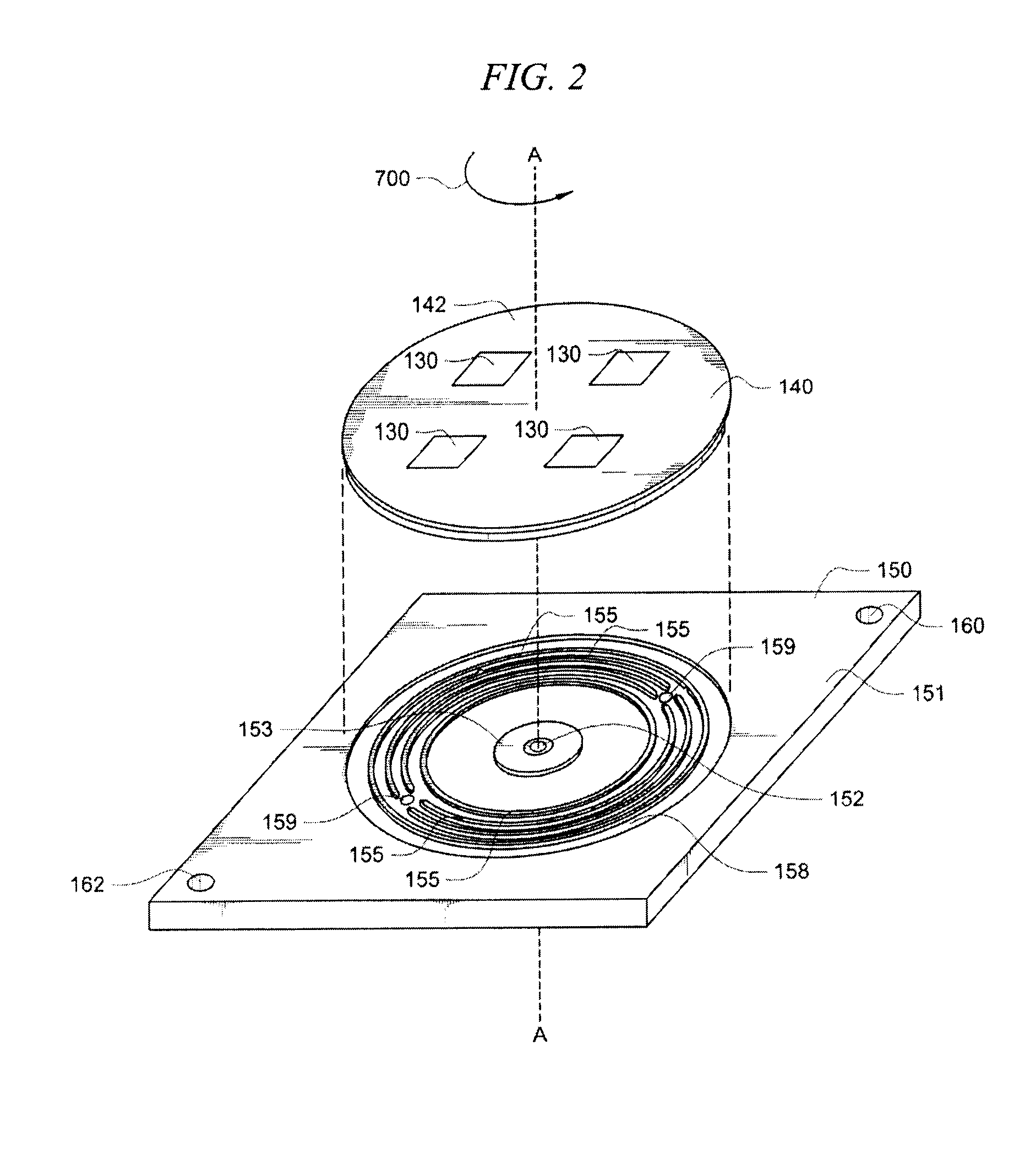Non-Contacting Thermal Rotary Joint
a technology of thermal rotary joints and non-contact heat, which is applied in the direction of manipulators, manufacturing tools, light and heating equipment, etc., can solve the problems of difficult to remove the heat from the turntable, electronic components could be damaged, and electrical power consumed by electronic components and generate hea
- Summary
- Abstract
- Description
- Claims
- Application Information
AI Technical Summary
Benefits of technology
Problems solved by technology
Method used
Image
Examples
Embodiment Construction
[0032]Referring now to FIG. 1, shown is perspective view of an apparatus 100 comprising a first substrate 140 rotatably mounted to a second substrate 150. The first substrate 140 is rotatable relative to the second substrate 150 about a rotational axis A-A. In the embodiment of the invention shown in FIG. 1, the first substrate 140 is rotatable relative to the second substrate 150 about the rotational axis A-A in the direction of arrow 700. In another embodiment of the invention, the first substrate 140 is rotatable relative to the second substrate 150 about the rotational axis A-A in the direction opposite arrow 700.
[0033]The apparatus 100 is typically used in an application involving electronic equipment (not shown). In this regard, a plurality of thermal energy generating devices 130 could be disposed on a first or upper side surface 142 of the first substrate 140. The thermal energy generating devices 130 are devices including but not limited to electronic components, motors, or...
PUM
 Login to View More
Login to View More Abstract
Description
Claims
Application Information
 Login to View More
Login to View More - R&D
- Intellectual Property
- Life Sciences
- Materials
- Tech Scout
- Unparalleled Data Quality
- Higher Quality Content
- 60% Fewer Hallucinations
Browse by: Latest US Patents, China's latest patents, Technical Efficacy Thesaurus, Application Domain, Technology Topic, Popular Technical Reports.
© 2025 PatSnap. All rights reserved.Legal|Privacy policy|Modern Slavery Act Transparency Statement|Sitemap|About US| Contact US: help@patsnap.com



